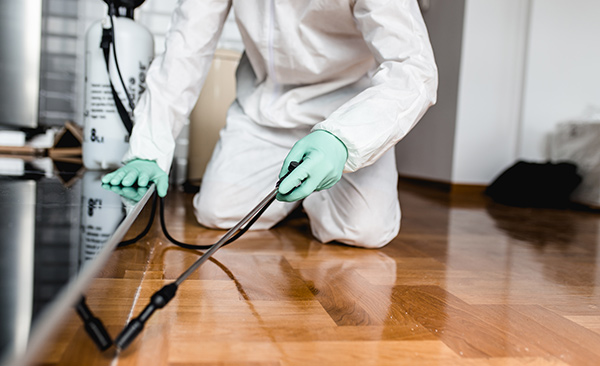Top-rated Pest Control to keep your home clean and pest-free.
Top-rated Pest Control to keep your home clean and pest-free.
Blog Article
Eco-Friendly Pest Control Approaches for Handling Wild Animals in Urban Areas
Urban locations frequently find themselves at the intersection of human task and wild animals, leading to unique challenges in insect administration. These approaches not just shield the setting but also enhance area engagement in wildlife management. As urban populaces continue to grow, understanding the characteristics of wild animals interactions becomes progressively important.
Comprehending Urban Wild Animals Characteristics
Understanding Urban Wild animals Dynamics is important for developing efficient and green bug control techniques. Urban locations are progressively ending up being habitats for numerous wildlife varieties, driven by aspects such as habitat fragmentation, food schedule, and human infringement. Identifying these characteristics permits a nuanced method to pest monitoring that lines up with ecological concepts.
Urban wild animals typically consists of types such as raccoons, squirrels, and birds, which adjust to city atmospheres, discovering specific niches in environment-friendly spaces, parks, and also suburbs. Their presence can result in problems with human beings, especially when they exploit personnels for food and sanctuary. Understanding the habits and environmental roles of these types educates techniques that decrease adverse interactions while advertising biodiversity.
Additionally, recognizing the interdependencies within city environments helps in recognizing important locations for habitat preservation and repair. This knowledge contributes to the advancement of integrated pest monitoring (IPM) techniques that think about the environmental balance, thereby minimizing reliance on dangerous chemicals. By cultivating conjunction in between humans and urban wildlife, cities can produce healthier atmospheres that profit both citizens and neighborhood communities, paving the method for sustainable metropolitan living.
Natural Repellents and Deterrents
Natural repellents and deterrents use a lasting option to traditional bug control techniques by taking advantage of the power of nature to maintain unwanted species away. These environmentally friendly services normally use plant-based components, necessary oils, and various other naturally occurring substances that deter pests without harming the environment.
One effective all-natural repellent is peppermint oil, which is understood to push back rodents and insects. Its solid aroma is undesirable to numerous pests, making it a preferred selection for metropolitan settings. Likewise, vinegar and citrus peels can function as deterrents, as their strong smells are normally uninviting to different wildlife.
Additionally, diatomaceous earth is an all-natural powder that can be spread out in areas vulnerable to insect task, successfully dehydrating and preventing pests without posturing dangers to non-target types. In addition, garlic sprays and neem oil are acknowledged for their ability to fend off a vast variety of parasites, including both bugs and larger wild animals.
Carrying out these natural repellents not just reduces reliance on chemical pesticides however also promotes a much healthier city community, fostering a much more well balanced coexistence in between people and wild animals. By utilizing these approaches, metropolitan locations can efficiently manage bug populations while reducing ecological influence.
Habitat Adjustment Techniques
Efficient environment alteration techniques play a critical role in lasting insect monitoring by altering the environment to make it less for pest problems. By understanding the ecological characteristics of metropolitan locations, homeowner can carry out critical alterations that hinder insects while advertising biodiversity.
(Ant control Port Charlotte)One key technique includes maintaining appropriate hygiene. This includes routine waste elimination, safeguarding trash can, and eliminating standing water to minimize breeding sites for bugs and rats. In addition, landscape design practices such as choosing indigenous plants can boost ecological balance, supplying environments for useful microorganisms while reducing resources for bugs.
One more important method is to secure access factors in structures. Checking and repairing fractures in foundations, walls, and home windows can significantly reduce pest accessibility. Developing physical barriers, such as fences or plant barriers, can hinder wildlife movement right into human-inhabited areas.
Integrated Insect Administration Practices
Building upon environment alteration methods, integrated pest management (IPM) techniques use an alternative approach to regulating bug populations while minimizing environmental impact. IPM combines numerous methods, including organic, cultural, mechanical, and chemical controls, to attain efficient pest monitoring.
Biological control entails the introduction of all-natural killers or parasites to lower insect populaces. Cultural techniques, such as crop turning and sanitation, interrupt pest life cycles and reduce their habitats - Pest Control. Mechanical controls, like catches and obstacles, offer prompt relief from look at this now bug pressures without chemical intervention
Chemical controls are made use of as a last resource, concentrating on targeted applications that restrict injury to non-target species and the atmosphere. The option of eco-friendly chemicals, when required, is integral to the IPM framework. In addition, checking pest populations and analyzing potential damage aids inform decision-making, guaranteeing that treatments are prompt and reliable.
Community Involvement and Education

(Silverfish control Port Charlotte)Workshops and educational sessions can furnish residents with understanding concerning indigenous species, habitat preservation, and efficient safe insect administration strategies. Cooperation with schools, regional organizations, and government agencies even more boosts instructional outreach, guaranteeing that essential information reaches diverse audiences.
In addition, community-led campaigns, such as neighborhood clean-up days and habitat remediation jobs, not just advertise biodiversity but likewise enhance neighborhood ties. Pest control service. By urging homeowners to share their experiences and monitorings, communities can establish targeted approaches that resolve details neighborhood parasite concerns
Including comments from locals into insect management plans enables an extra receptive and flexible approach to wildlife challenges. Inevitably, educated and involved neighborhoods are essential to achieving lasting success in environment-friendly bug control, causing healthier urban environments that value both human and eco-friendly requirements.

Verdict
In verdict, green bug control approaches offer sustainable remedies for taking care of urban wildlife. By prioritizing habitat modification, utilizing all-natural repellents, and applying integrated insect administration methods, communities can promote a harmonious coexistence with local fauna.
Report this page